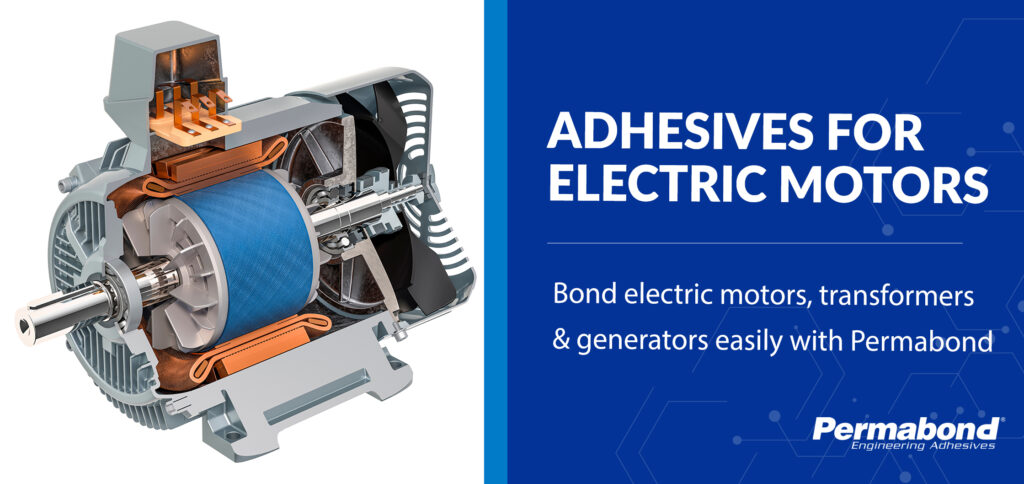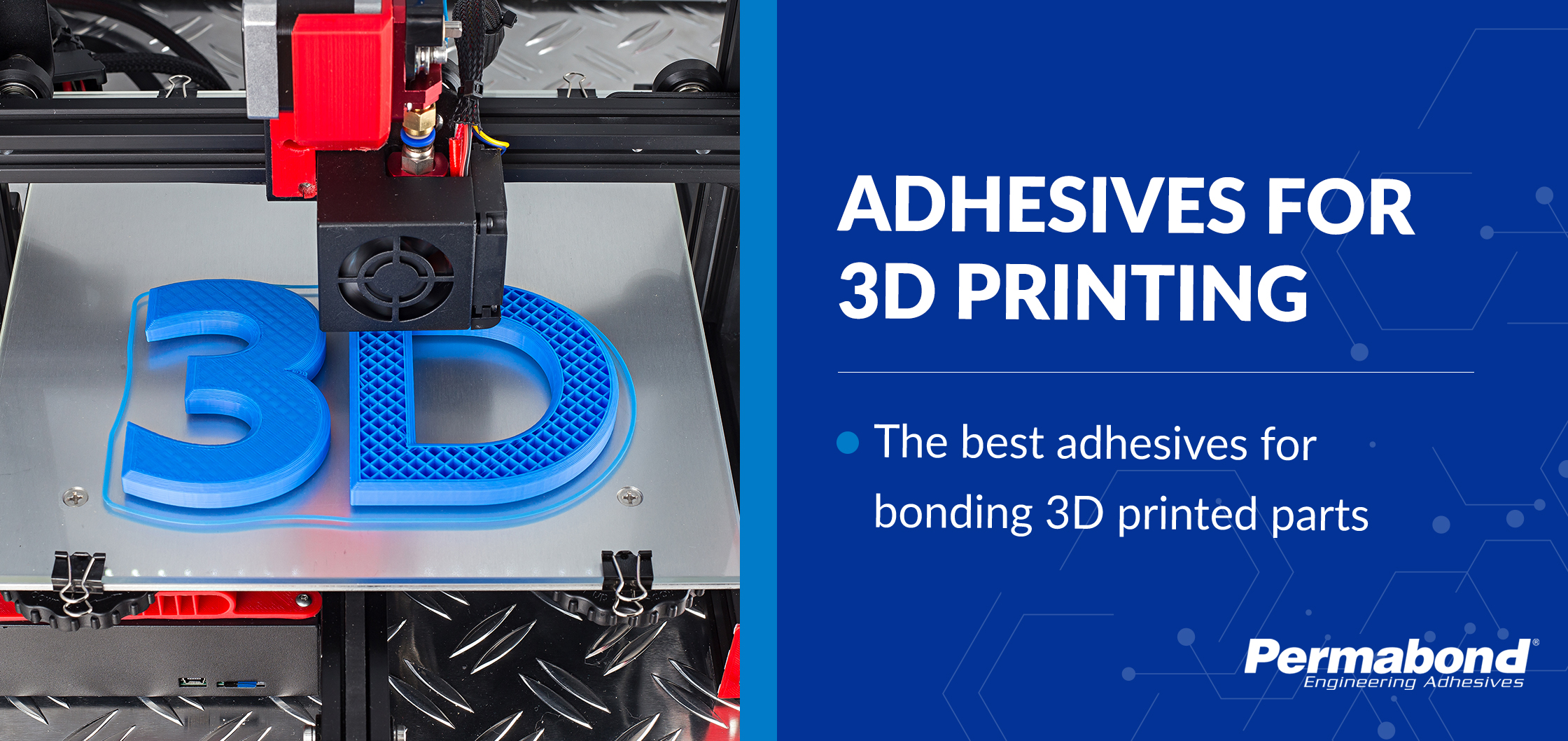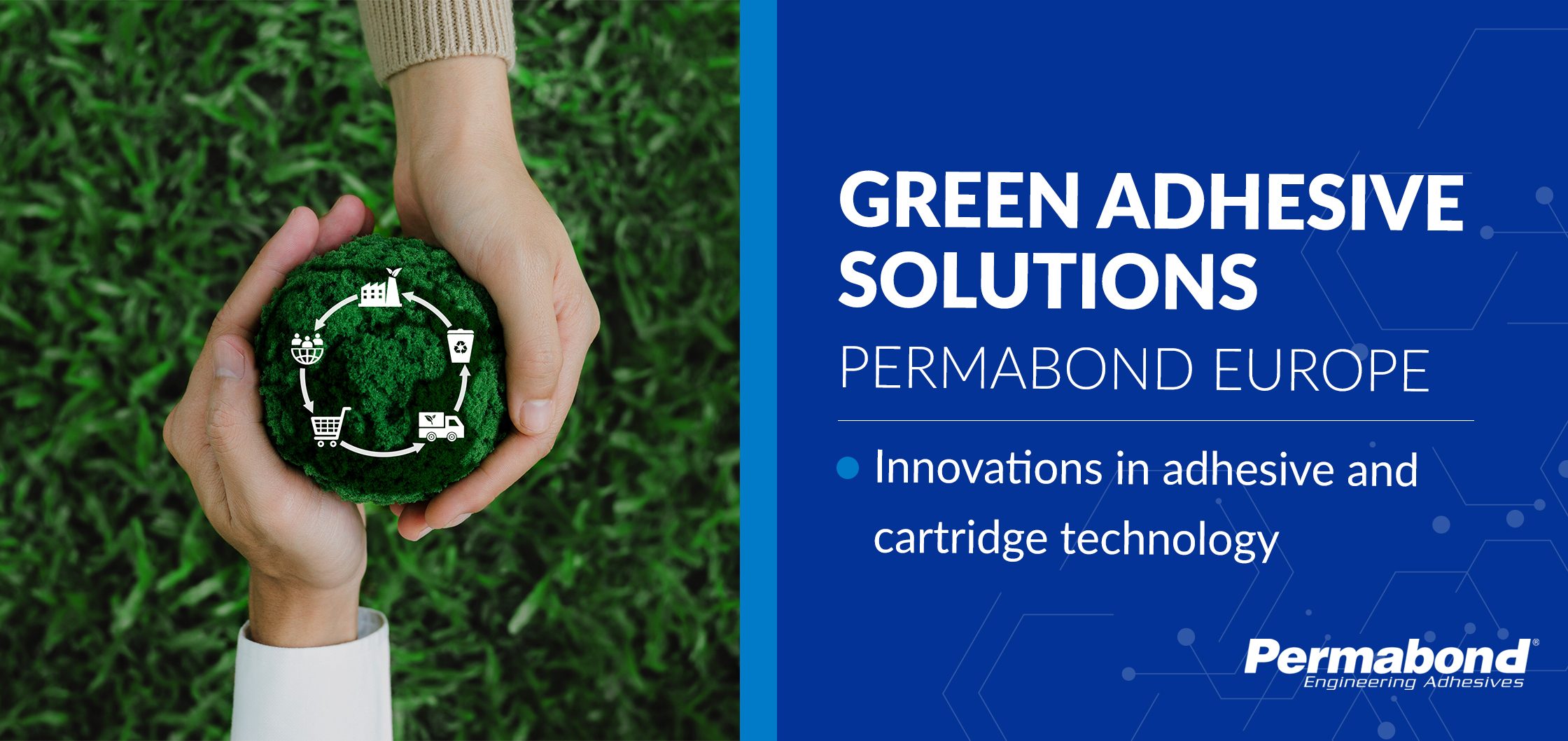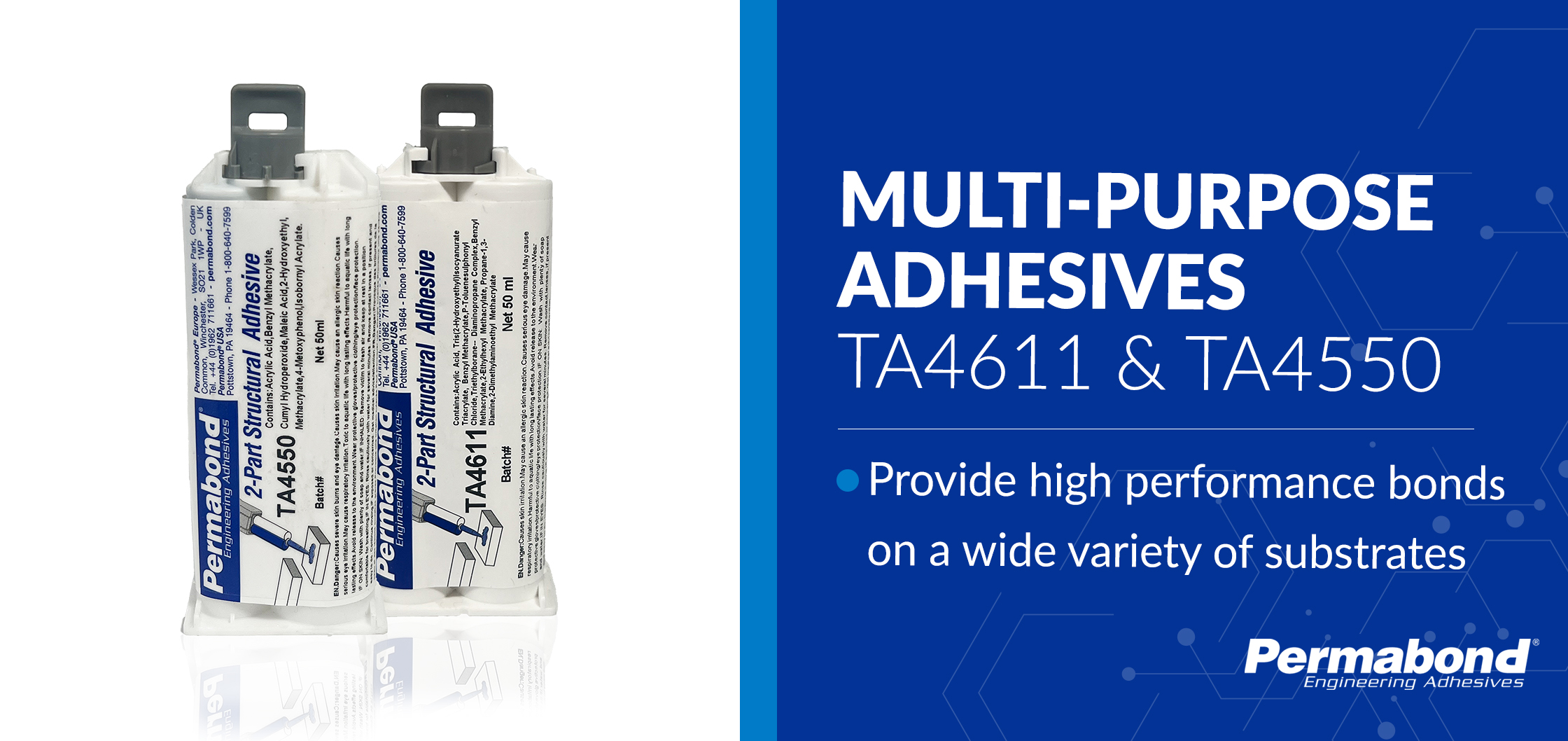At the end of March, Permabond will be exhibiting at Coiltech in Augsburg, Germany, in a company first. This show is dedicated to all things electric motors, transformers and generators, all things which require adhesives during their production process. We’re thrilled to have the opportunity to showcase our vast array of electric motor adhesive solutions at Coiltech, and even if you won’t be visiting us at the show, below we explore some of the various applications our adhesives serve in this industry.
Bonding Electric Motor Components
Electric motors are everywhere, powering everything from the small motor in your electric toothbrush to the pump in your garden pond and the electric wing mirror adjuster in your car. In fact, the automotive industry alone uses over 2 billion motors per year. Adhesives play a crucial role in the construction of electric motors, as they provide an efficient method for bonding magnets, shafts, rotors, and housings. Not only do they offer reliable fastening, but they also eliminate the need for mechanical fixings. Fastenings often add to the motor’s size, weight, and noise levels, therefore using adhesives instead reduces all of these.
Permabond’s magnet bonding adhesives are specifically designed to work effectively with materials such as steel, ferrite, neodymium, and other magnetic substances. These adhesives offer several important features, including high-temperature resistance, rapid curing speeds suitable for high-speed electric motor production lines, and exceptional impact resistance to meet industry “drop test” standards. Additionally, Permabond has introduced a new methacrylic acid-free structural acrylic adhesive. This innovative adhesive is gaining popularity among motor manufacturers who seek a solution that avoids corrosion of sensitive components within sealed motors. Another advantage of this adhesive is that it eliminates the need for heat curing, thereby preserving a higher level of magnetism.
Examples of electric motor applications:
- Wire reinforcement on rotor tangs and wire tacking – use a cyanoacrylate, epoxy or UV adhesive
- Wire reinforcement at commutator – use a high temperature epoxy
- Wire coating – use an epoxy
- Retaining bearings to the shaft housing, or the rotor to the shaft – use an anaerobic adhesive
Electric Motor Magnet Bonding
Most electric motors contain magnets, and adhesives are a very safe, cost effective method of installing magnets to electric motors. They bring many benefits to the end product, including uniform stress distribution (as compared to fasteners such as clips, which tend to concentrate stress around the fastening joint), dampening of vibration, resistance to corrosion and ease of assembly.
Permabond adhesives can help with many aspects of motor magnet bonding. They offer high temperature resistance, which is often key in electric motors. They’ve been toughened for drop and thermal resistance and cure quickly at room temperature.
There are several options available for bonding magnets, including epoxy adhesives, surface-activated structural acrylics, external mix structural acrylics and cyanoacrylates. You can read more about Permabond’s options for bonding electric motors and magnets here.
Bonding electric transformers
Adhesives serve a multitude of purposes in electric transformers, from the bonding of insulation materials such as paper, polyester and polymer films, to providing vibration dampening and heat resistance.
Examples of applications for adhesives in electric transformers include:
Bonding ferrite halves for transformer coils: Adhesives are used to bond ferrite halves together, instead of mechanical clips. They help reduce the weight of components, as well as minimize rattle and hum in transformers. There are several types of adhesives available for this purpose, including structural acrylic adhesives, UV-curable adhesives, and two-component epoxies. Structural acrylic and UV-curable adhesives are preferred due to their fast curing speeds.
Bonding ferrite cores/rods into coils: An anaerobic adhesive can be used for this application, or alternatively a heat curing epoxy.
Encapsulating copper coils: You may consider using a single-part heat curing epoxy, or a low viscosity two-part epoxy. Alternatively, a tack-free UV adhesive could be considered for coating copper windings and coils.
If you’d like to find out more about Permabond’s solutions for electric motors and coils, download our product brochure HERE. And if you want to read more about Coiltech, you can do so here. Registration to attend the show is free and we’d love to see you there!
Contactez-nous
Produits
Assistance technique

Permabond vous aidera à sélectionner la colle qui convient à votre application.
Pour trouver un distributeur

s produits Permabond sont vendus par l'intermédiaire de distributeurs dans le monde entier.
Permabond est certifié ISO QMS compagnie.

Vous pouvez obtenir une copie de notre certificat ISO





